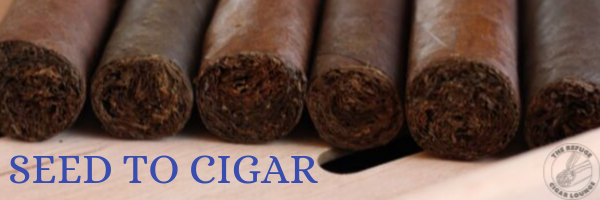Alright, so our happy little tobacco plants have avoided the ailments we discussed last week and are growing nice and healthy. Remember how we talked about the plants being primed (leaves harvested) 2-4 leaves at a time? And that each plant can provide roughly 12-18 leaves suitable for cigars? Good!
The first thing that happens to the leaves after priming is to be sorted by size and texture. Color doesn’t come into play yet, as the leaves are all green at this point. Palm branches are then used to braid the same classification leaves together into strips. Next, the strips are taken to curing barns in the fields. These barns are lined with long poles (called cujes) and the rows of braided tobacco leaves are hung over them.
The leaves are left in the barns to dry out. This process can take anywhere from 3-8 weeks, depending on the weather. This is also where the leaves will slowly change color from green to yellow to the brown you are accustomed to seeing in your cigar. The barns are packed full of leaves and they become compressed as more and more leaves are added to the barns. I think we can all agree a packed curing barn is a beautiful sight!
Next week, we will move along from the curing barns and break down the process that happens in the packing houses.

